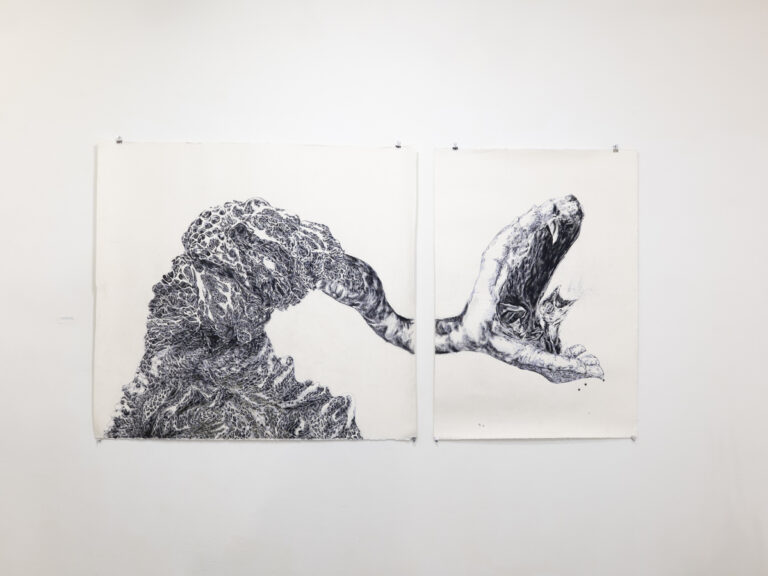
“I just thought it was interesting, the things we’re told not to look at.” Teagan Stewart shares this with me. A multimedia artist based in Toronto, and currently pursuing her Bachelor of Fine Arts at Mt. A, Stewart’s work explores nature, life, mortality, and everything in between. Her first solo exhibition, Ornithology of Care, concluded at the Struts Art Gallery this Saturday November 26, in Sackville, marking a seminal achievement in this artist’s developing career.
Ornithology is the study of birds, their behaviour, and their physiology. “I was thinking a lot about the concept of care this past summer in relation to how we care for others and the care that’s offered by our general community,” Stewart adds. Composed of eleven drawings and two sculptures, this exhibit drew much of its inspiration from the artist’s own life and struggles to intertwine her environment and community.
Despite her interdisciplinary training and skills, Stewart finds herself drawn (pun intended) to illustrations. “I have definitely been leaning towards ink drawings; I am really drawn to black and white […] I just love it so much.” Compared to the fickle nature of other mediums such as painting or print-making, ink and charcoal on paper offer a deceiving simplicity: “I can picture the end result in my head for ink drawings,” she explains. The final concepts are striking but not at all without depth: intricate, detailed illustrations, complex shapes and motifs like hands and wings blending together. The monochromatic nature of the drawings are evocative yet a touch unsettling. Where is the answer? Where do human influence and animal consequence meet and separate?
In her childhood, Stewart remembers living by a park with a constant influx of injured birds: “I [would] bring them home and then try and care for them and bring them back to life. Normally they would die, because what are you going to do for internal bleeding, you know? But we gave them a safe space to die […] I think seeing that made it easier to comprehend humans. I found it a more accessible way to look at people […] especially in the city there would be dead birds everywhere: getting hit by cars, and in windows, et cetera, and you are not supposed to look at them.”
Along with the illustrations, the exhibit’s sculptures further the idea of facing uncomfortable truths. Five welded bells, now without their clappers, were originally functional and even brought to a Divest protest by Stewart. “They [were] functional and sounded horrible, but I think that is part of it.” Following the event, Stewart removed the clappers, after further reflection on climate change and the idea of ‘alarm bells.’ “In Toronto it was really smokey in the summer. You were not supposed to go outside, and that was so crazy to me. […] There were all these articles coming out about how this smoke and these fires are the alarm bells of a greater problem, but then after the smoke left everyone just went back to normal. […] I was thinking, what is the point of alarm bells if you do not listen to them?”
“It is not very pretty, the bells, but that is OK. It is an ugly issue, so I feel like it is better to make an ugly sculpture.”
Next semester, Stewart will be traveling through her university’s exchange program to Tasmania, excited for the opportunity to experience, “a totally different perspective on my art and also just the art world in general, like they’ll have a completely different art history”. To follow Stewart’s art journey, or learn more about her and her works, visit https://www.teagankstewart.com or follow her on Instagram at @teagan_ks.





